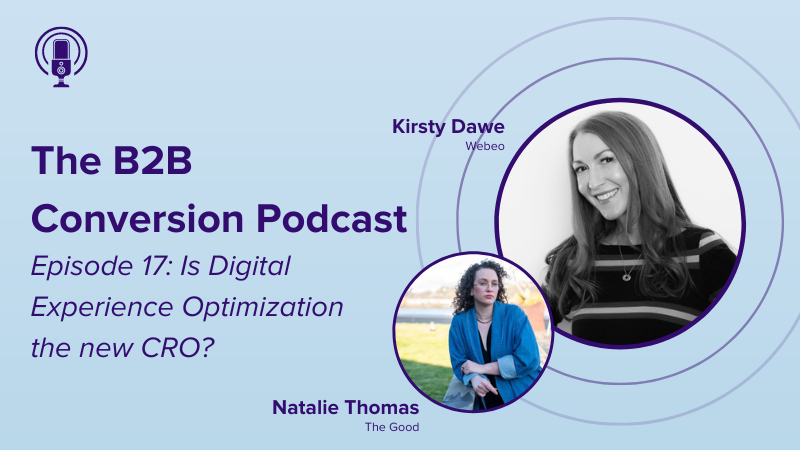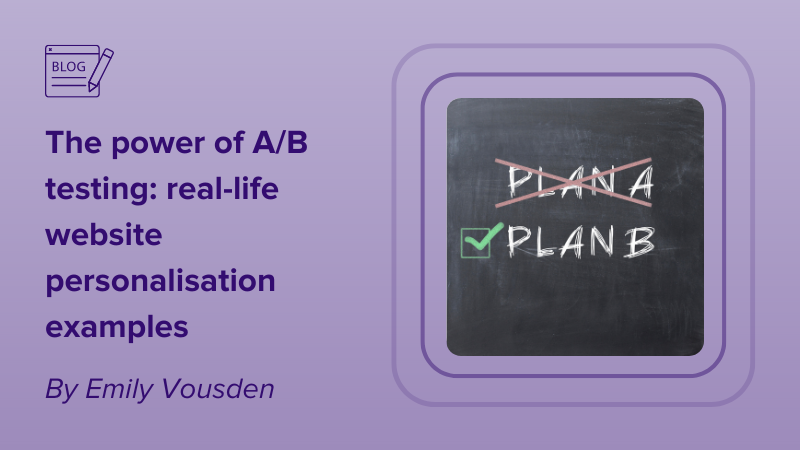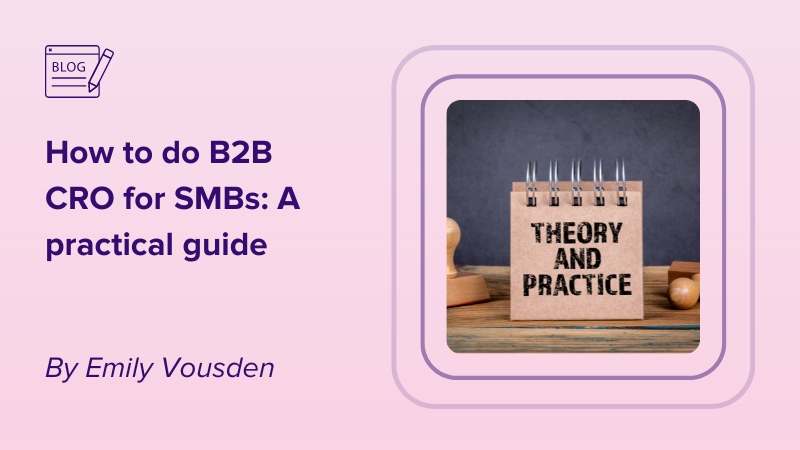In 2024, businesses will challenge marketers to put their creative minds to further use and fine-tune their marketing activities towards channels that genuinely deliver results. As always, it’s a case of different strokes for different folks. The highest performing channels will vary from business to business, but essentially marketing leaders will need to refocus budgets and activity to generate more MQL’s from less resource.
For many businesses this means opting out of expensive marketing tactics (events and pay-per-click to name a few). In exchange, opt for more creative, cost-effective solutions like thought leadership content and optimization. The reality is, businesses just can’t afford to invest in higher-cost campaigns that fail to deliver results. Sponsoring an event in 2024 is three times more expensive than in 2019, yet it attracts less than half the number of delegates.
But, reduced budgets doesn’t mean you have to curb your enthusiasm for new marketing opportunities. You just need to get your creative juices flowing and approach things a little differently.
So it’s time to look at existing marketing strategies through a different lens. Be brutal about what is delivering the biggest return, and determine what doesn’t cut the mustard. Organizations need to go through an intense review of their strategy, channels, and processes to mitigate the higher-cost channels and optimize the rest of their strategy. Without doing so, marketers will fail to sustain (and build on) results.

What does this mean?
We’ve broken it down into three key areas:
- Focusing on optimization to get the most out of every marketing channel
- Enhancing process efficiency to accomplish tasks quicker and more effectively
- Increasing department productivity
It’s likely that we all recognize numerous ways to enhance productivity and efficiency within our departments. However, the day-to-day grind often leads us to prioritize ‘getting the job done,’ leaving us less time to look at inefficiencies. Well, the gap for poor processes and low productivity is getting even tighter. So now’s the time to get to grips with how we can do more with less.
Could this affect our department’s well-being?
Marketing leaders have observed that employees working even harder to compensate for fewer resources has resulted in a strain on their team members, which has a knock-on effect on the department’s well-being. With teams feeling the pressure, this may compromise the quality of work, potentially affecting the success of marketing strategies.
But, we’re marketers, we thrive in high-pressure environments. The buzz of tight deadlines, chasing targets, and the excitement of testing a costly campaign all fuel our passion for the job. Facing challenges heightens the exhilaration we feel when successfully reach our goals and meet deadlines. By managing the shift effectively through clear communication and sharing of the company’s longer-term vision, we can ensure employees are well supported.
There are lots of positives that can come from budget and time restraints, including increased creativity and efficiency as we work hard to think outside the box. More junior members of the team become exposed to additional channels and activity, which can fast-track skill development. Personal and professional growth is positive for team morale. It has an encouraging impact on people wanting to help and feeling more confident to suggest new ideas and challenge existing processes.
To reap the benefits of ‘doing more with less’ and prevent employee burnout, managers need to establish clear and open lines of communication within their departments. Departments should encourage collaborative working and sharing the workload on larger projects, as multiple perspectives lead to more innovative strategies. Providing additional support and training department-wide can significantly contribute to effective working and employee wellbeing. Plus, acknowledging the team’s outstanding performance will further motivate and inspire them.
How to experiment in a lean, efficient way
Experimentation is key to growth, and with more growth comes bigger marketing budgets (it’s pretty much a fact). So, whilst we’re narrowing our focus on the activity that delivers the best results, we must still experiment as part of our marketing strategy. Inevitably this helps improve efficiency by being laser-focused on what drives results and what doesn’t. To get started:
- Embrace the lean methodology for testing and experimentation. Start with small, well-defined experiments to test your hypotheses. This minimizes resource commitment while allowing for changes and improvement.
- Collaborate and Share Resources. Partner with other teams or businesses for shared experiments. Pool resources, skills, or data to conduct experiments together – reducing individual costs while expanding the scope.
- Work on your long-term experimentation roadmap. Aligning with the whole business growth plan is essential so you don’t waste time on initiatives that don’t support the long-term vision of the company.
How to ensure you don’t sacrifice the customer experience
Cutting back on resources shouldn’t mean compromising your customer experience. Let’s start with the basics, efficient communication channels and consistent brand messaging should remain a hygiene factor. Look for free or cost-effective tech to help respond to clients quicker and more effectively. For example, chatbots and automated messaging and workflows can help stream enquiries and basic requests/challenges, freeing up the team to deal with more complex issues.
Focus on personalization and optimizing the customer journey. If you don’t know them already, identify your most crucial touchpoints in the customer journey and enhance them. Acquisition and retention marketing should get the same treatment – with high-quality personalized messaging based on what each segment needs, at different stages of the buying and customer lifecycle.
Creating strategic partnerships with your clients is also a great way to improve their experience as a customer and enhance their buy-in to your product. (Whilst also helping you create valuable collaborative content!) Invite your clients to webinars, podcasts, lunch and learns, and any other tools at your disposal – then use the material to create further content.
Action plan to do more with less
- Prioritize high ROI channels. Start by analyzing your marketing channels. Focusing on crucial metrics such as Cost Per Lead and Cost Per Demo. Once you’ve identified your top-performing channels, consider reallocating some budget from underperforming ones to enhance their reach. This might involve eliminating certain strategies– this is ok but make sure you’ve identified the potential impact on your overall strategy.
*Note – here’s the time to use experimentation – remember, big budget decisions should be made on facts!
- Investing in Automation. Sounds obvious, right? Automation was pretty much all marketers spoke about for about a decade, with teams focused on automating their key campaigns to leave more time for strategic planning. Sure, automation often comes with a hefty price tag, so weighing up cost vs resource is essential.


- Getting more from your tech stack. Last year Gartner reported that tech utilization was down to 42% in 2022. That means CMO’s are letting 58% of their MarTech stack sit idle. We wouldn’t accept washing 58% of our marketing budget down the drain, yet that’s exactly what we’re doing with our tech stack. Marketing leaders need to become less accepting of wasting their budget on tech that they aren’t utilizing and consider how they can consolidate tech to prevent duplication.


- Collaborate with customers. Work with customers to produce authentic customer generated content. We are talking testimonials, use cases, case studies, and webinars. Collaborating with customers who can shout about how great your product is will create credible content that can be used at all stages of the marketing funnel. Plus, content can be repurposed from video to blog to infographic and so on.
- Leveraging your database. The reality is, if your database isn’t in shape it will have a drastic impact on your campaign execution. If you want to work smarter you need an accurate, segmented database to support you. Start by aligning it with your ICP (ideal customer profile) and then segment it based on your go-to market strategy. This will take time, which isn’t always ideal, but it will save you a ton of time and headaches in the long run.
- Optimize Conversion Funnel. It’s time to ditch the ‘if it’s not broken, don’t fix it’ attitude. Your campaigns aren’t necessarily broken, but there’s always room for improvement and optimization. Look at your conversion metrics within your customer journey and constantly test and refine to ensure higher conversion rates.
- Employee Advocacy. Equip your employees to be the top advocates of your brand and improve the reach of your content through sharing. Also look at the talent across multiple departments and utilize it to help you deliver the best quality content.
- Gen AI. The next level of artificial intelligence. On the brink of being rooted into every stage of the marketing strategy. As AI becomes embedded in numerous content creation tools, marketers will produce content more quickly. Marketers will need to learn how and when to use AI to help generate content.
In summary, rather than looking at this as a case of shrinking budgets and heightened expectations, see it as an opportunity to add even further value to your organization through creativity and resourcefulness to navigate the marketing landscape in 2024. In the current market, steering companies away from high-cost marketing initiatives towards more nimble and cost-effective solutions is win-win. A concentrated approach on optimization and personalization will be critical to helping businesses achieve their goals. Embracing the shift and evolving marketing processes to become more efficient, will make marketing departments emerge stronger, more innovative and more resilient.
FAQ’s
How can I decide which channels are the most effective for my business?
To identify the most effective marketing channels for your business, you need to put together analysis based on your different performance metrics. For example, you could look at Cost Per Lead and Cost Per Demo for each channel. This will give you an understanding of which channels are performing well and where you need to re-allocate budget from underperforming areas.
With reduced budgets, how can you manage the potential strain on marketing teams?
Prioritizing clear communication across the whole team will firstly help reduce strain on individuals. With an open line of communication, team members are able to flag when they need guidance and support. Additional training should also be offered across the entire department, whilst also acknowledging outstanding team performance when necessary as motivation.
How can you ensure that cost-cutting measures do not affect the customer experience?
The experience your customers have whilst on your site impacts whether you win and retain clients or lose them to competitors. The first step is to ensure that communication channels are efficient for the customer at all times in their journey. Implementing tools such as chatbots and automated workflows, helps you respond to prospects and customers more efficiently, ensuring your customers experience does not get effected.




